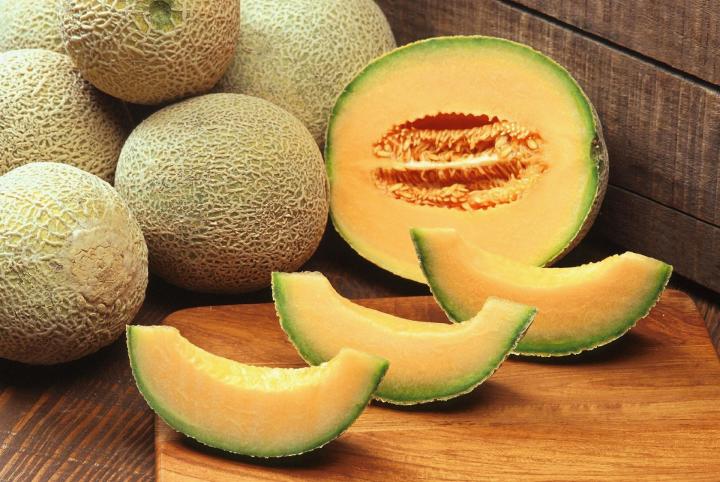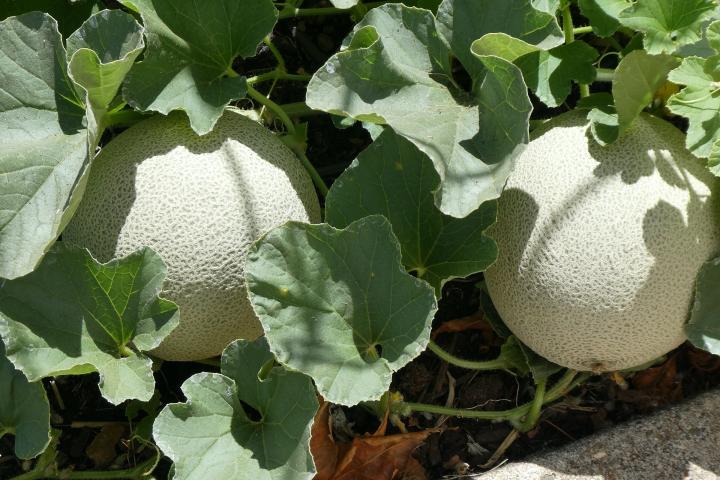
Also receive the Almanac Daily newsletter including gardening tips, weather, astronomical events, and more.
Planting, Growing, and Harvesting Cantaloupes
ADVERTISEMENT
Are the blossoms edible ?? Thank you :)
Hi there!
I followed Ben's advice to dig in raw kitchen compost and now I have 30+ Cantaloupe seedlings growing! Its awesome. I've transplanted a handful of healthy looking plants and some of the others look like they have rust on the first leaves... (cotydons?). What is this and what should I do about it?
Thanks!!
Kim
Love to know how this turned out for you. I had the same compost experience: suspected they were pumpkins at first, but I now have almost ripe cantaloupe hanging off my fence. Didn’t gave the rust: did that persist?
It’s hard to know what it could be without seeing a picture, but if seedlings look diseased or otherwise weak, you’re better off just getting rid of them (in the trash, not compost)—especially given that you had so many appear!
Planted in June -
Both vines with many flowers and leaves but no fruit — I’m sad!
What to do? Thank you—
It says if you don’t get fruit it’s to much nitrogen in the soil and not enough magnesium. Epsom salt for magnesium. To much nitrogen potash and or better ne meal for phosphorus melon love phosphorus I put banana peels in a plastic drinking bottle cut the bottom out but in upside down and water through the bottle where you cut it off I also add cinnamon in the mix for fungus. Hope this helps. Buy a soil tester .
Maybe the flower-blossoms are not getting "fertilized due to lack of insects"; there are ways to Pollinate flowers;; I've read;
No easy answer here, Dorothy, so we went to the cooperative extension for their thinking: High temperatures or high fertility can cause the cantaloupe to produce only male blooms which results in poor fruit set. Nematodes can also cause small plants, profusion of blooms and no fruit.
All good info but lacks day to maturity , which would be very helpful in northern areas.
Southern areas 80 days as stated, I believe; cooler climate will take longer to grow/bloom if at all due to them needing ample sun rays and heat. hope that helped.











